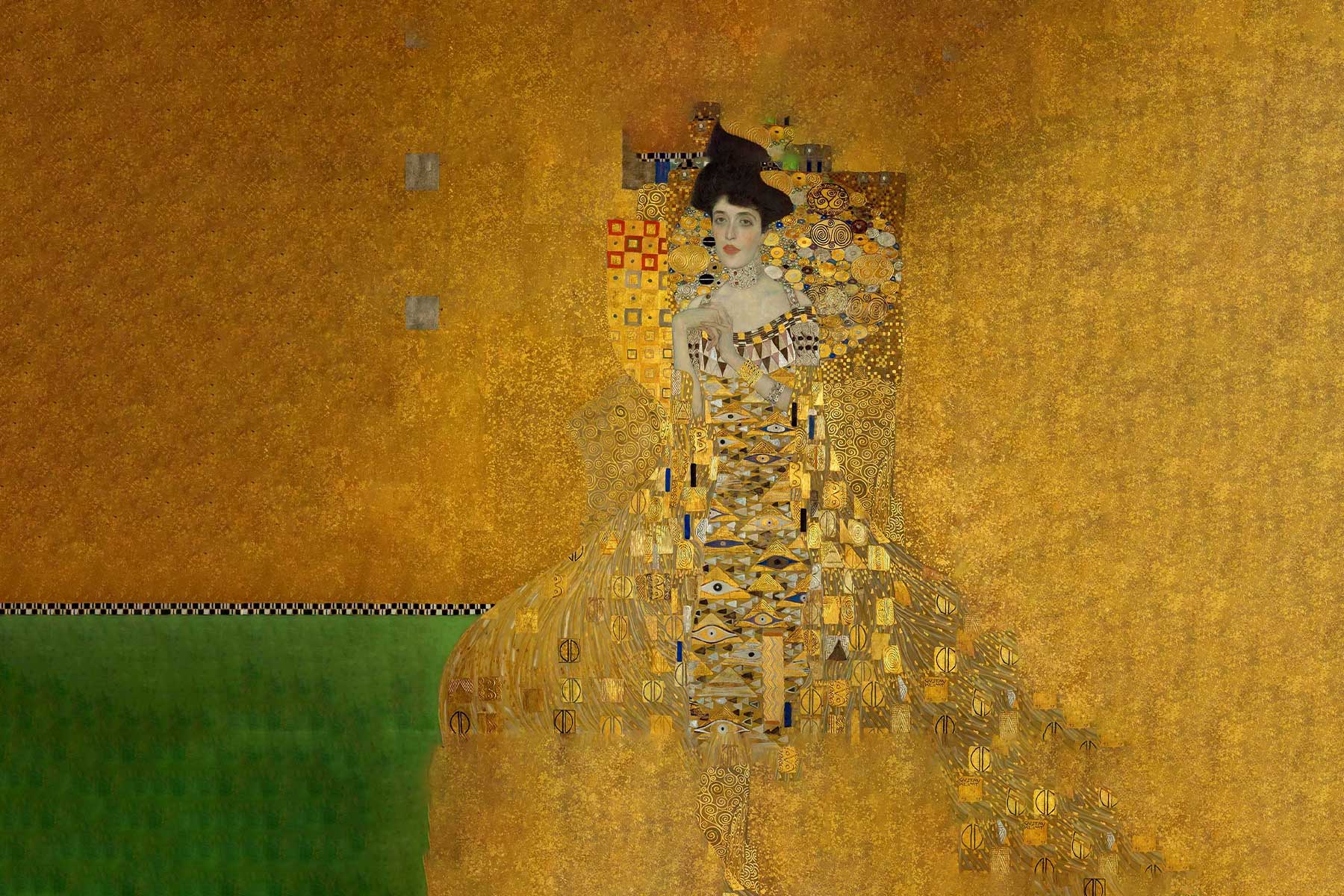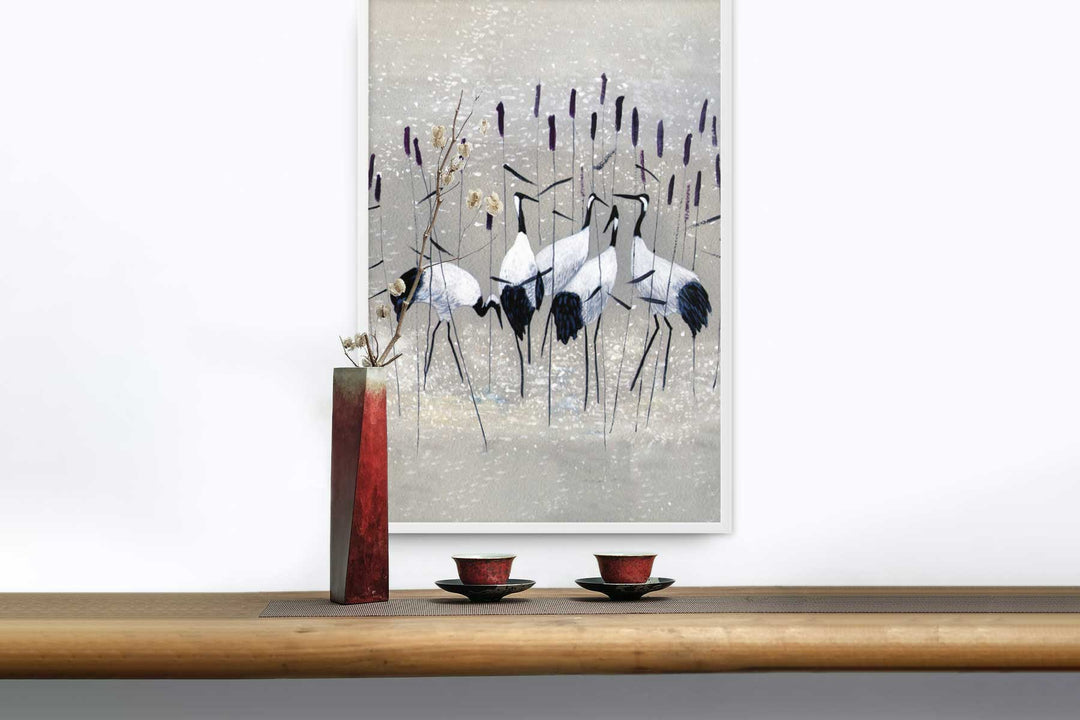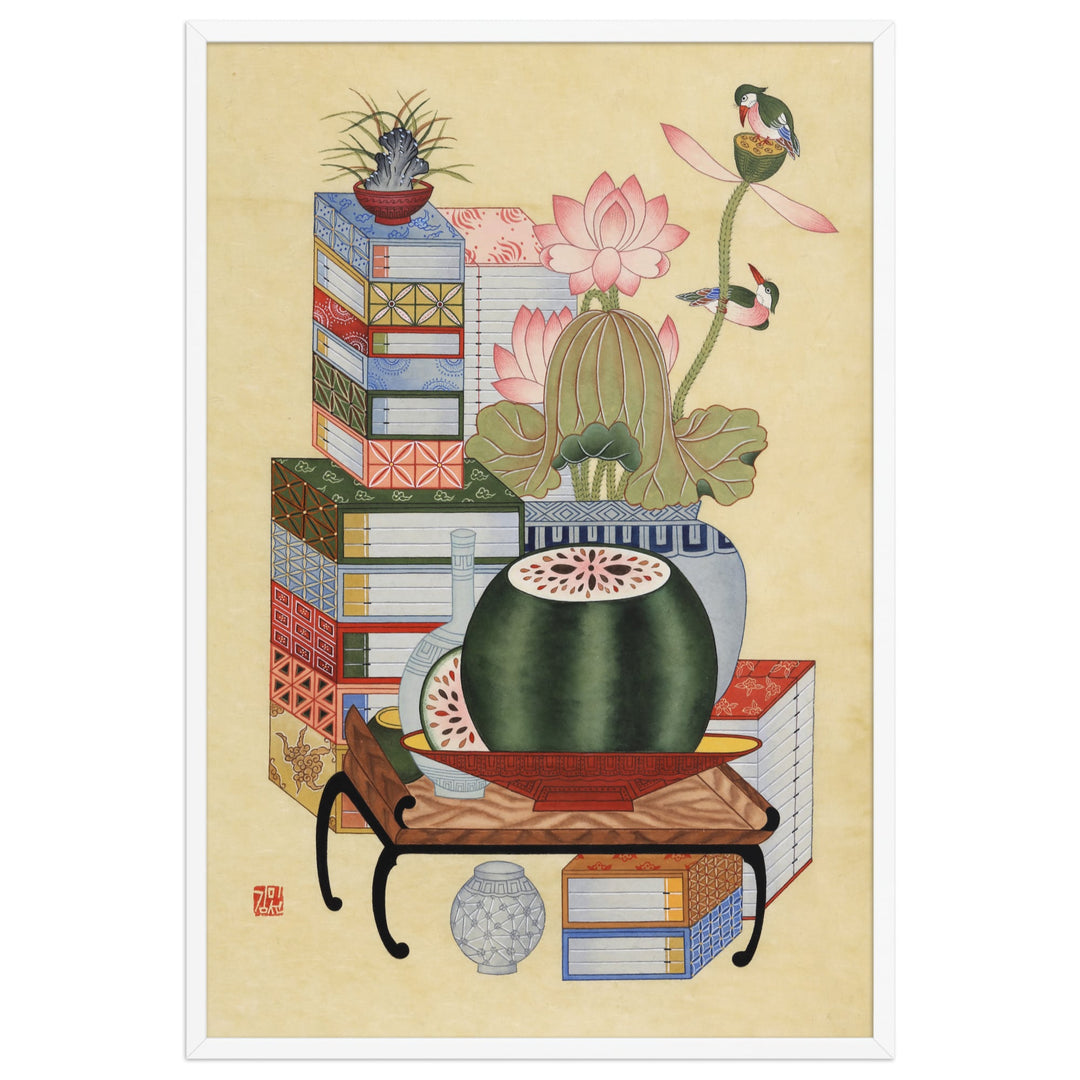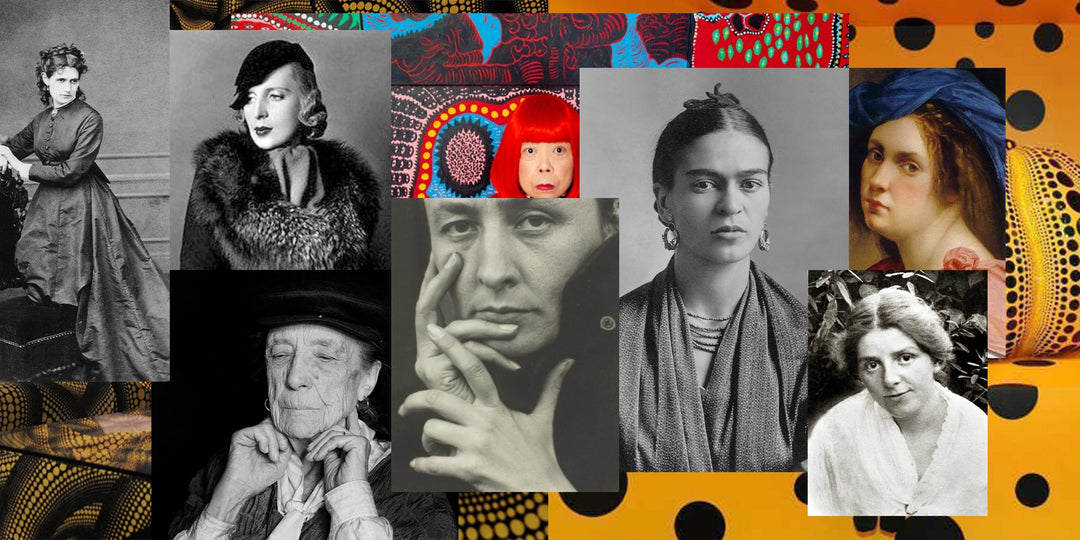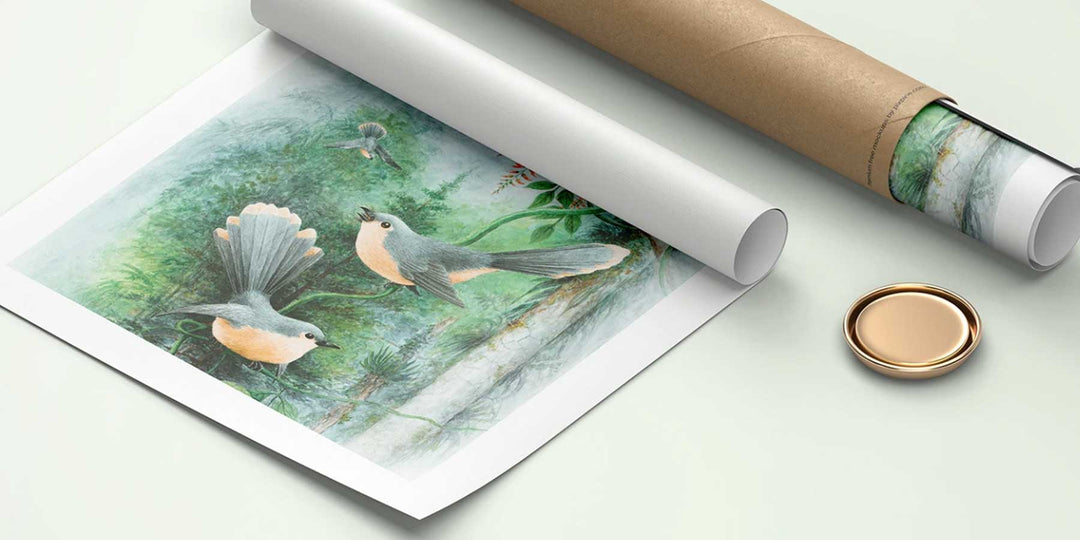Summary of Gustav Klimt: A Visionary in Art
Gustav Klimt, an outstanding artist often celebrated as a visionary, shared the deep desire to translate his emotional and spiritual states into each of his artworks. Klimt was commercially successful during his lifetime and sold many of his paintings. He is counted among the most famous artists in history. His canvases are characterized by densely applied, visible brushstrokes, a vibrant and lush color palette that emphasizes Klimt's personal expression in painting. Each painting immediately conveys how the artist perceived each scene, interpreted through his eyes, mind, and heart. This highly idiosyncratic and emotionally moving style has significantly influenced artists and art movements in the 20th century and up to today and will ensure that the significance of Gustav Klimt extends far into the future.
Achievements
🎨 Klimt's dedication to expressing the inner spirituality of humans and nature led to a fusion of style and content, resulting in dramatic, imaginative, rhythmic, and emotional canvases. These paintings convey far more than just the outward appearance of the respective subject.
🎨 Although his mental instability caused unrest during his lifetime, it was simultaneously the driving force behind the emotional depictions of his surroundings. Each of his works was imbued with deeper psychological reflection and resonance.
🎨 Klimt's unstable personal temperament became synonymous with the romantic image of the tormented artist. His self-destructive talent found resonance in the lives of many 20th-century artists.
🎨 Klimt used an impulsive, gestural painting technique and symbolic colors to express subjective emotions. These methods and practices influenced many later modern art movements, from Fauvism to Abstract Expressionism.
Important artworks by Gustav Klimt
The Kiss (The Lovers), 1908-1909
🎨 Oil on canvas - Austrian Gallery Belvedere
🎨 Reprint at artlia: The Kiss, one of the 10 most famous paintings in the world
The painting "The Kiss" by Gustav Klimt, created between 1907 and 1908, is one of the most famous and iconic works of the Austrian symbolist and Art Nouveau artist. It is not only an outstanding example of Klimt's unique style but also a symbol of love, intimacy, and the rich symbolism of Art Nouveau.
The composition: "The Kiss" shows a couple in a loving embrace sharing a passionate kiss. The two figures are draped in golden robes adorned with intricate patterns and ornamental details. The decorative, almost abstract background design enhances the impression of love and intimacy.
Golden Period and Art Nouveau: Similar to other famous works by Klimt, "The Kiss" falls into his "Golden Period." In this creative phase, Klimt increasingly incorporated gold leaf into his paintings, resulting in a unique and luxurious style. Art Nouveau, with its organic forms and decorative elements, shapes the entire composition.
Symbolism of the Embrace and the Kiss: The embrace and the kiss of the two figures are not only a depiction of love but also carry a deeper symbolic meaning. The golden surroundings and the adorned garments could indicate spiritual and mystical dimensions, while the merging of the figures emphasizes the idea of unity and harmony.
Female Figure and Protection: The female figure in "The Kiss" is particularly striking. Her head is surrounded by a golden halo, suggesting an almost sacred aura. This depiction can be seen as a connection to the Art Nouveau movement, which often integrated spiritual and mystical elements into its art.
Influences of the Vienna Secession: Klimt was a co-founder of the Vienna Secession, an artists' association that rebelled against the conservatism of traditional art institutions. "The Kiss" shows the artistic freedom and innovative spirit that the Secession stood for.
Romance and Eroticism: The painting also embodies romantic and erotic elements characteristic of Klimt's works. The golden, ornamental aesthetic enhances the sensuality of the motif and sets it apart from the context of traditional portraits and love depictions.
The Timelessness of "The Kiss": "The Kiss" by Gustav Klimt remains a timeless masterpiece that has preserved a fascination for art lovers around the world over the decades. The combination of artistic symbolism, decorative splendor, and the expression of love and intimacy makes this painting a key work in the art history of Art Nouveau and beyond.
Portrait of Adele Bloch-Bauer I, 1907
🎨 Oil, silver, and gold on canvas - Neue Galerie (New York)
🎨 Reprint at artlia: Adele Bloch-Bauer I
The portrait of Adele Bloch-Bauer I, created by Gustav Klimt between 1903 and 1907, is one of the most famous works of the Austrian symbolist and Art Nouveau artist. The painting is not only an outstanding example of Klimt's stylistic mastery but also has a fascinating history that makes it an iconic artwork.
The composition: Adele Bloch-Bauer I is a portrait of Adele Bloch-Bauer, the wealthy wife of sugar industrialist Ferdinand Bloch-Bauer. Klimt uses his characteristic ornamentation and patterns to depict Adele in an impressive, golden gown. The figure is surrounded by golden and silver symbolism that merges into elaborate patterns and abstract forms.
Golden period and Art Nouveau: The portrait of Adele Bloch-Bauer I falls into Klimt's so-called "Golden Period," during which he increasingly incorporated gold leaf into his paintings. This era is characterized by elaborate patterns, organic forms, and a decorative style strongly influenced by Art Nouveau. Klimt used gold leaf to create a luxurious and almost iconic aura around his models.
Symbolism and allegory: The painting contains numerous symbolic elements that contribute to Klimt's profound style. Adele Bloch-Bauer is depicted not only as an elegant lady but also as a kind of symbol for the decadent and refined society of the Viennese Fin de Siècle. The ornamental setting and the use of symbols give the portrait an allegorical dimension that goes beyond the simple depiction of the sitter.
Adele Bloch-Bauer as patron: Adele Bloch-Bauer was not only Klimt's model but also his patron and close friend. She supported Klimt financially and also enabled his access to Vienna's cultural elite. Therefore, the portrait is not only a personal document but also a testament to the connections and relationships within the Viennese art scene at the beginning of the 20th century.
The restitution: The story of Adele Bloch-Bauer I is marked by legal disputes and controversies. During the Nazi period in Austria, the painting was confiscated by the Nazis. After decades of legal battles and international demands, the portrait was finally restituted by the Austrian Gallery Belvedere.
The significance: The portrait of Adele Bloch-Bauer I holds not only art historical importance but also represents the story of expropriation and restitution during World War II. It is a symbolic work that bridges the era of Art Nouveau and the emerging modern art.
Overall, the portrait of Adele Bloch-Bauer I is not only an impressive example of Gustav Klimt's artistic mastery but also a window into the world of the Viennese Fin de Siècle and the personal relationships that shaped the art scene of that time.
Hope II, 1907, 110.5 x 110.5 cm
🎨 Oil, platinum, and gold on canvas - MoMA, The Museum of Modern Art (New York)
🎨 Reprint at artlia: Hope II
Gustav Klimt's "Hope II," created between 1907 and 1908, is a masterpiece that captures the artist's fascination with symbolism, the female form, and the complex interplay of emotions. This iconic painting belongs to Klimt's celebrated "Golden Period," during which he incorporated gold leaf and intricate patterns into his works to create artworks of visual grandeur and deep symbolism.
Composition and symbolism: The composition of "Hope II" revolves around the female figure and showcases Klimt's mastery in depicting the human form, enriched with a wealth of symbols. The female figure, adorned with elaborate patterns and surrounded by vibrant colors, becomes a vessel for exploring profound themes.
A striking feature of the painting is the pregnant belly of the central figure, symbolizing fertility and the potential for new life. This motif aligns with Klimt's recurring exploration of themes surrounding love, life, and the cyclical nature of existence.
Ornamentation and patterns: "Hope II" is famous for its ornamental richness and the intricate patterns characteristic of Klimt's fascination with decorative art and his connection to the Art Nouveau movement. The figure's garment, adorned with geometric shapes and floral motifs, creates a visually captivating effect. The meticulous detail of the patterns adds to the overall opulence of the painting.
Color palette: Klimt's distinctive coloring is fully displayed in "Hope II." The warm, golden hues that permeate the painting contribute to its ethereal and otherworldly quality. The applied gold leaf, appearing in a mosaic-like arrangement, gives the painting a luminous and spiritual dimension, further emphasizing the sacred and symbolic nature of the subject.
Themes of hope and redemption: Despite the title, "Hope II" is not overly optimistic in its portrayal. The contemplative expression of the figure and the subtle melancholy emanating from the painting suggest a more complex narrative. Klimt often engaged with psychological and emotional aspects of the human experience, and "Hope II" is no exception.
The symbolism of the painting invites the viewer to reflect on themes such as life, transformation, and the mysterious journey of the human soul. The idea of hope is woven in this context with the cyclical character of life and the deep mysteries that accompany it.
Legacy and Influence: "Hope II" is not only a testament to Klimt's artistic genius but also a reflection of the cultural and intellectual currents of his time. The painting fascinates audiences worldwide and invites interpretations that go beyond its aesthetic appeal.
In summary, "Hope II" stands as a touching exploration of human existence through Klimt's unique visual language. The painting invites the viewer to immerse themselves in the realms of symbolism, emotions, and the timeless search for meaning, thus becoming a timeless masterpiece in art history.
Water Serpents II (Water Serpent II), 1904-1907, 80 x 145 cm
🎨 Oil and gold on canvas - Private collection
🎨 Reprint at artlia: Water Serpents II
"Water Serpents II" is a painting by Gustav Klimt, created between 1904 and 1907. It is part of his famous "Golden Period," during which he worked intensively with gold leaf and created artworks known for their decorative splendor and symbolic depth.
Composition and Style: "Water Serpents II" shows, as the name suggests, snakes dancing in a decorative pattern among plant tendrils and stylized waves. The composition is characteristic of Klimt's unique style, which encompasses Art Nouveau and symbolist elements. The flowing lines, organic shapes, and use of gold give the painting an aesthetic opulence.
Golden Period: Like many of his works from this time, Klimt incorporated gold leaf in "Water Serpents II". This use of gold not only gives the painting a visual richness but also symbolizes spirituality and the search for the divine.
Symbolism of the snakes: The snakes in Klimt's painting carry various symbolic meanings. In many cultures, snakes represent both life and death, rebirth, and transformation. Here, the snakes could represent a connection to nature and the cyclical nature of life.
Connection to Antiquity: Klimt was known for drawing inspiration from various cultural and mythological sources. In "Water Serpents II", there are references to the art of antiquity, especially Greek and Roman mosaics and murals.
Influences of Art Nouveau: The painting aligns with the principles of Art Nouveau, an art movement characterized by organic forms, decorative elements, and an emphasis on line. Klimt was one of the leading representatives of Art Nouveau in Vienna.
Female Nudity and Eroticism: The use of female nudes, a frequent motif in Klimt's works, adds an erotic dimension to the painting. The curved lines and flowing pattern enhance the sensuality of the image.
Spirituality and Nature: "Water Serpents II" also reflects Klimt's interest in spiritual themes and the connection between humans and nature. The organic forms of the snakes and plants may suggest a mystical reverence for nature.
Conclusion: "Water Serpents II" is a fascinating example of Gustav Klimt's mastery in combining symbolism, decorative art, and an innovative style. Through the use of gold and complex symbolism, this painting remains an important contribution to Art Nouveau and adds to the timeless appeal of Klimt's work.
Peasant Garden with Sunflowers, 1907, 110 x 110 cm
🎨 Oil on canvas - Austrian Gallery Belvedere, Vienna
🎨 Reprint at artlia: Garden with Sunflowers
"Garden with Sunflowers" is a painting by Gustav Klimt, which he painted in 1906. It is part of his "Golden Period," during which Klimt developed a fascination with golden ornaments and decorative elements.
Composition and Style: The painting depicts a sunlit garden with a lush flower bed dominated by sunflowers. The composition is characterized by Klimt's signature elements, including organic shapes, patterns, and the use of gold leaf.
Golden Period: Like many works from his Golden Period, Klimt incorporated gold leaf in "Garden with Sunflowers." This golden layer not only gives the painting an opulent visual texture but also symbolizes spirituality and the search for the divine.
Symbolism of the sunflowers: Sunflowers were a recurring motif in Klimt's work. They often represent joy of life, spirituality, and connection to nature. The radiant presence of the sunflowers gives the painting a vibrant energy.
Connection to nature: Klimt had a strong connection to nature, visible in many of his works. "Garden with Sunflowers" expresses not only the beauty of nature but also a deeper emotional resonance with the environment.
Influences of Art Nouveau: The painting aligns with the principles of Art Nouveau, an art movement characterized by organic forms, decorative elements, and an emphasis on line. Klimt was one of the leading representatives of Art Nouveau in Vienna.
Female figures: Some interpretations suggest that female figures can be seen in the background of the garden. Klimt was known for his depiction of female sensuality and eroticism, and these elements are present in many of his works.
Gold and ornaments: The use of gold leaf and the embellishment of the painting with ornaments are characteristic of Klimt's art during this period. The details and brilliance of the gold enhance the decorative splendor of the garden.
Conclusion: "Garden with Sunflowers" is an impressive example of Gustav Klimt's artistic mastery and his ability to unite symbolism, nature, and ornamentation into a harmonious total work of art. The painting remains a timeless piece that not only celebrates the beauty of nature but also captures the depth of human experience and emotions.

Tree of Life, 1905-1909
🎨 Oil on canvas - Private collection
🎨 Reprint at artlia: Tree of Life
Gustav Klimt's "Tree of Life," created between 1905 and 1909, represents a pinnacle in his artistic career and is an outstanding example of the Austrian artist's symbolist style. The painting, produced during Klimt's "Golden Phase," is characterized by a fascinating combination of decorative elements, symbolic depth, and a unique aesthetic expression.
The composition: "Tree of Life" presents a majestic tree woven into a swirl of geometric shapes, golden spirals, and ornamental details. The tree rises in an almost abstract landscape and is surrounded by a variety of figures depicted in intricate patterns. The decorative design of the background enhances the overall impact of the painting.
Golden Period and Art Nouveau: This painting aligns with Klimt's "Golden Period," during which he intensively incorporated gold leaf into his works. The Tree of Life is highlighted by golden embellishments that are not only aesthetically impressive but also symbolize spiritual dimensions and luxury. Art Nouveau shapes the entire composition, emphasized by organic forms and decorative elements.
Symbolism of the Tree of Life: The Tree of Life represents a symbol of life, fertility, and spiritual growth in many cultures and religions. Klimt's interpretation adds a deeper level by surrounding the tree with mythological and symbolic figures. The connection between humans and nature is enhanced by the unique symbolism of the Tree of Life.
Multilayered Meaning: "Tree of Life" holds a multilayered meaning that goes beyond mere decorative splendor. The various figures surrounding the tree may point to the diversity of life and the interconnectedness of all living beings. The fusion of nature and humanity plays a central role in Klimt's symbolist depiction.
The Connection of Time and Eternity: The golden spirals and patterns surrounding the Tree of Life may refer to the idea of time and eternity. Klimt skillfully weaves the concept of timeless spirituality and the ever-changing cycle of life into this impressive artwork.
Artistic Innovation and Art Nouveau Movement: "Tree of Life" is a masterpiece that not only highlights Klimt's artistic innovation but also captures the spirit of the Art Nouveau movement. The organic forms, decorative elements, and use of symbols make this painting a key work of this artistic era.
Influences of the Vienna Secession: As a co-founder of the Vienna Secession, Klimt expresses in "Tree of Life" the spirit of artistic freedom and innovation for which this movement is known. The painting stands as a manifesto for the desire to break away from traditional conventions and explore new artistic forms of expression.
Timelessness of "Tree of Life": Gustav Klimt's "Tree of Life" remains a timeless masterpiece that fascinates art lovers around the world through its artistic symbolism, decorative splendor, and profound depiction of life and spirituality. The combination of Klimt's unique style, symbolist depth, and innovative artistic expression makes this painting a significant contribution to art history.

The Music by Gustav Klimt, 1895 - 1896
🎨 Oil on canvas - Private collection
🎨 Reprint at artlia: The Music
"The Music," painted by Gustav Klimt between 1905 and 1909, is an outstanding example of the Austrian artist's symbolist style and marks a pinnacle in his artistic career. The painting, created during Klimt's "Golden Period," fascinatingly combines decorative elements, symbolic depth, and a unique aesthetic expression.
Composition: "The Music" presents an allegorical depiction of music in a swirl of organic forms, golden lines, and intricate details. At the center stands a female figure representing the muse of music, surrounded by other figures and cherubic beings. The overall composition radiates an otherworldly beauty.
Golden Period and Art Nouveau: Klimt's "The Music" reflects his "Golden Period," during which he extensively incorporated gold leaf into his works. Golden embellishments emphasize the spiritual dimension and luxury of music. Art Nouveau shapes the entire composition through organic forms and decorative elements that create a harmonious unity.
Symbolism of Music: The depiction of music as a divine force that inspires and connects people is reflected in Klimt's interpretation. The use of symbols and allegorical figures enhances the spiritual dimension of the painting and invites the viewer to reflect on the transcendent power of music.
Multilayered Meaning: "The Music" holds a multilayered meaning that goes beyond mere representation. The various figures and elements may point to the diversity and unity of the musical experience that connects people of different backgrounds and cultures.
Time and Eternity: The golden lines and spirals surrounding "The Music" may suggest the idea of timelessness and eternity in music. Klimt captures the timeless beauty and transcendent nature of music in this artwork.
Artistic Innovation and Art Nouveau Movement: "The Music" is a masterpiece that captures Klimt's artistic innovation and the spirit of Art Nouveau. Through the use of symbols and decorative elements, the painting shows Klimt's pursuit of artistic freedom and innovation.
Influences of the Vienna Secession: As co-founder of the Vienna Secession, Klimt expresses in "The Music" the spirit of artistic freedom and innovation that defines this movement. The painting stands as a manifesto for the desire to break away from traditional conventions and explore new forms of expression.
Timelessness of "The Music": Gustav Klimt's "The Music" remains a timeless masterpiece, appreciated worldwide for its symbolic depth, decorative splendor, and transcendent portrayal of music lovers. The combination of Klimt's unique style and his innovative artistic expression makes this painting a significant contribution to art history.
Danae by Gustav Klimt, 1907
🎨 Oil on canvas - Private collection
🎨 Reprint at artlia: Danae
"Danaë", painted by Gustav Klimt between 1895 and 1896, is an impressive example of his early symbolist style and marks a period in which the artist intensely engaged with mythology and eroticism. This work is among Klimt's significant pieces and illustrates his unique talent for combining mythological themes with deep emotions and rich symbolism.
Composition: In "Danae" Klimt shows the Greek mythological figure Danae, who is visited by Zeus in the form of a golden shower. The main figure lies in a sensual pose, embraced by a flowing garment that artfully captures the golden rain. The expression of her closed eyes and gentle facial expression convey devotion and rapture.
Early symbolist elements: Klimt's "Danae" reflects his transition to a distinctly symbolist style. Here the artist combines mythological narrative with personal expressiveness. The precisely applied gold accents in the depiction of the rain already point to the opulent use of gold that would later dominate his "Golden Period."
Symbolism of transformation: The painting depicts the legend of Danae as an allegory for spiritual and physical fulfillment. The golden rain symbolizes not only divine influence but also fertility and power. Klimt brings this mythical transformation to the canvas by capturing the tension between human longing and divine touch in a single scene.
Erotic undertones: "Danae" is a testament to Klimt's masterful ability to weave eroticism with art without descending into crudeness. The delicate lines and the shape of the figure enhance the sensuality of the scene and depict the intimate connection between human and deity, a central theme in many of his works.
Art and Myth: Gustav Klimt often used ancient mythology as a source of inspiration to explore universal themes such as passion, devotion, and transcendence. In "Danae," he succeeds in capturing the essence of the story through the depiction of a single moment and transporting the viewer into a world full of mysticism and beauty.
Multilayered Meaning: The depiction of intertwined lines and the dynamic golden rain can be interpreted as a reference to fate and the unpredictable influence of divine forces. Danae embodies not only the mythological figure but also stands as a symbol of devotion and the pursuit of enlightenment.
Innovative Techniques and Art Nouveau Approaches: Although "Danae" comes from an earlier phase, it already shows Klimt's preference for decorative elements and organic forms that would later characterize Art Nouveau. The harmonious fusion of figure and background as well as the skillful use of symbolism underline Klimt's pioneering spirit and his development into one of the most important artists of his time.
Influences of the Vienna Secession: As a co-founder of the Vienna Secession, Klimt created works like "Danae" that explored new artistic expressions and challenged traditional norms. The painting is a testament to his courage to break free from academic constraints and realize his vision of art.
Timeless Beauty of "Danae": Gustav Klimt's "Danae" remains a timeless masterpiece admired for its artistic symbolism, masterful use of gold, and intimate portrayal of myth and humanity. Its innovative techniques and deep emotional resonance make this painting an indispensable part of art history and a celebrated example of Symbolist painting.

Birkenwald (Beech Forest), 1903
🎨 Oil on canvas – Austrian Gallery Belvedere, Vienna
🎨 Reprint at artlia: Birkenwald
Gustav Klimt's "Birkenwald" (1903) is one of his most impressive landscape paintings and vividly shows how the artist interpreted nature in his characteristically decorative style. The work is a prime example of Klimt's ability to combine naturalistic motifs with an ornamental, almost abstract visual language.
The composition:
"Birkenwald" shows a dense stand of trees with slender birch trunks whose white-gray bark roots in a carpet of autumn-colored leaves. Klimt designs the trees in vertical, rhythmically repeated lines that create an almost ornamental effect. The ground surface is covered with countless mosaic-like color spots, giving the image a vibrant, lively depth.
Stylistic classification:
The painting was created during Klimt's productive "Golden Period," in which he devoted himself not only to figurative themes but also to landscapes. Unlike his iconic portraits, Klimt here forgoes gold leaf but transfers his preference for patterns, structure, and decorative surfaces into a naturalistic, almost mystical scene.
The painting style resembles a mosaic or carpet effect, characteristic of Klimt's artistic signature. The individual leaves appear almost abstract, although clearly recognizable, marking the transition from naturalistic to symbolic representation.
Symbolism of nature:
"Birkenwald" can be read beyond the purely decorative as a symbol of life, renewal, and transience. Birches represent purity and new beginnings in many cultures, while the autumn ground symbolizes the constant renewal of nature. The even, almost meditative structure of the forest invites the viewer to immerse themselves in a calm, timeless world.
Influence of the Vienna Secession and Art Nouveau:
Klimt was a co-founder of the Vienna Secession, which advocated for new forms of expression beyond academic traditions. "Birkenwald" reflects this spirit: instead of depicting the landscape purely naturalistically, Klimt transforms it into an artistic pattern strongly influenced by Art Nouveau. The vertical lines of the birches resemble textile ornaments, while the color fields of the foliage recall mosaics or stained glass windows.
Color palette and atmosphere:
The painting thrives on a rich, autumnal color palette with warm reds, browns, and yellows contrasting with the cool grays of the birch trunks. This color combination creates a calm, almost spiritual mood. Klimt succeeds in transforming an everyday natural motif into a poetic, almost dreamlike image.
Timeless effect:
"Birkenwald" is not only a highlight of Klimt's landscape painting but also an expression of his artistic vision to translate nature into a harmonious interplay of form, color, and symbolism. To this day, the painting captivates with its decorative appeal and the deep calm it radiates.
Biography of Gustav Klimt

Gustav Klimt, born on July 14, 1862, in Baumgarten, Austria, was a groundbreaking symbolist painter and a leading figure of the Vienna Secession. Trained at the Vienna School of Arts and Crafts, Klimt developed in the late 19th and early 20th centuries. Known for his distinctive style that combined symbolism with decorative aesthetics, he experienced his famous "Golden Phase" from 1899 to 1910, during which he created masterpieces like "The Kiss" and "Portrait of Adele Bloch-Bauer I." Klimt's works were often adorned with intricate gold leaf patterns and dealt with themes such as love, life, and the human condition. Although controversial for his provocative works, he left a lasting legacy that influenced modern art and cemented his place as a key figure in art history. Gustav Klimt died on February 6, 1918, leaving behind a rich body of work that captivates and inspires art lovers worldwide.
-
Early Years (1862-1880): Born into an artistic family, Klimt initially pursued a career in decorative painting alongside his brother Ernst and friend Franz Matsch. They founded the "Künstler-Compagnie" and worked on various mural projects.
-
Transition to Modernism (1890s): Klimt gradually turned to a more avant-garde and symbolic style, distancing himself from traditional academic art. His works became increasingly controversial by challenging societal norms.
-
Secession Movement (1897): Klimt played a crucial role in founding the Vienna Secession, a group of modern artists. The movement aimed to break away from traditional art and promote a new artistic spirit.
-
Golden Phase (1899-1910): Characterized by the lavish use of gold leaf, this phase marked Klimt's exploration of symbolism and allegory. His paintings from this period are some of his most famous and revered.
-
Later Years (1910-1918): Klimt continued his groundbreaking work, experimenting with new themes and styles. Unfortunately, his life was cut short by pneumonia during the Spanish flu pandemic in 1918.
Gustav Klimt's Legacy Gustav Klimt's influence on art and culture is immeasurable. His pioneering spirit and innovative use of symbolism paved the way for subsequent art movements, inspiring generations of artists. Klimt's legacy extends beyond the canvas and shapes the way we perceive and appreciate art. His unique blend of emotion, symbolism, and aesthetic genius ensures that Gustav Klimt remains an eternal icon in the art world.













